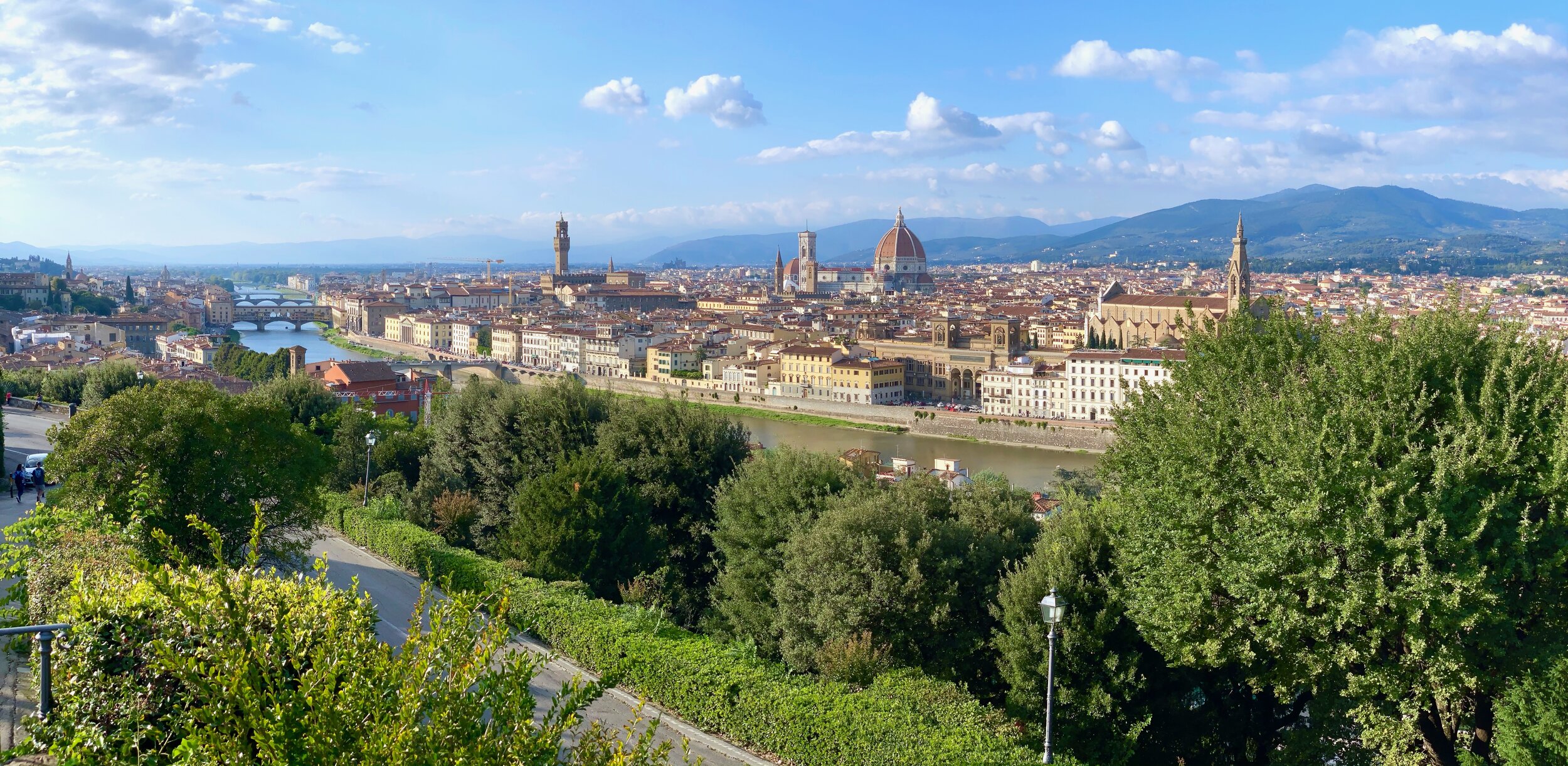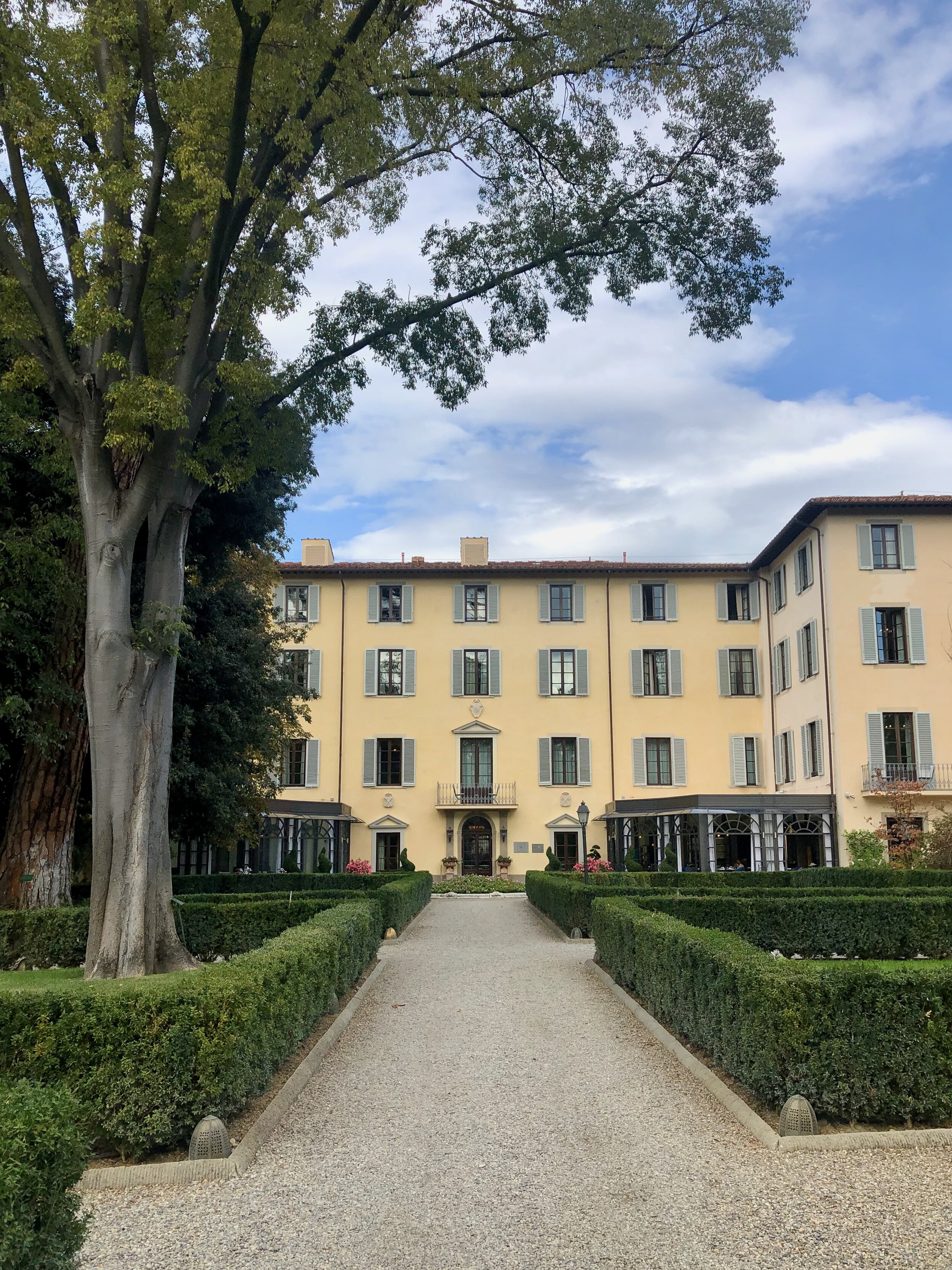Florence, Italy
Florence in central Italy, capital of the Tuscany region, is often ranked as one of the most beautiful cities in the world. The birthplace of the Italian Renaissance, the city is renowned for its art, architecture, monuments, museums and galleries including the world-famous Uffizi Gallery.
In the 15th century, the city was home of the Medici family, one of European history’s most important noble families and great patron of the arts, commissioning works by the three Florentine contemporaries - Michelangelo, Leonardo da Vinci and Botticelli. Renowned works by each of these artists, who rank among the most influential and important in history, are on display in the city.
We recently spent two nights and three days in Florence, a city best explored on foot, and a city whose historic center was declared a UNESCO World Heritage Site in 1982.
Dream
Four Seasons Hotel Firenze – A historic, incredibly opulent hotel filled with original art and comprised of two stunning Renaissance buildings: a former 15th century palazzo and 16th century convent, together with the city’s largest enclosed private garden.
The Palazzo Scala Della Gherardesca, was the private residence of Florentine nobles for five centuries until becoming a Four Seasons in 2008 after a seven-year renovation project.
There are 116 rooms and suites arranged in the two buildings: 79 in the Palazzo Della Gherardesca which houses the main hotel, lobby, bar and most restaurants, and 37 in La Villa, a self-contained hotel wing that lends itself to events with its own entrance and check-in. We stayed in a Premier Room in the Palazzo and ate breakfast each morning in the delightful Il Palagio.
Dining options include the flagship Michelin starred Il Palagio Italian restaurant, the seasonal Al Fresco and Pool Tree Bar, the Atrium Bar and Magnolia restaurant.
The magnificent walled 11-acre private garden, Giardino Della Gherardesca, was planted in the 15th century and is impeccably maintained. Arranged in the formal Italian style, it features fountains, follies and many sculptures and other works of art.
There is a two-story gym and spa building, with ten treatment rooms, set in the hotel grounds next to the outdoor swimming pool.
The hotel is just a 12-minute walk from the Duomo and other major attractions. Taking all of these facets into account, this incredible “urban resort” hotel is rightly hailed as one of the best in the world.
Dine
13 Gobbi – busy and very lively traditional Italian restaurant, popular with locals. The signature dish, 13 Gobbi Rigatoni, was some of the best pasta we tasted in Florence. During our visit, one of the waiters spontaneously broke out into song, to the entertainment of our fellow diners.
Trattoria 4 Leoni – A typical Tuscan restaurant located in the center of Florence between the Ponte Vecchio and Palazzo Pitti, in one of the historical piazzas of the region’s capital city, Piazza della Passera. The cuisine is genuine Tuscan fare with a menu changing according to the seasons and availability at the market. We sampled one of the staples – bistecca alla Fiorentina or Florentine T-bone steak for two.
Il Santo Bevitore – This former coach house with vaulted ceiling, dark wood paneling and contrasting whitewashed, bottle-lined walls remains one of Florence’s most popular restaurants, more than a decade after its opening. Known for its traditional seasonal Italian cuisine with a creative twist, the restaurant is a haven for locals and tourists in the know alike.
Antico Fattore – Tucked away in a backstreet just steps from the Uffizi, is this historic trattoria serving authentic Florentine and Tuscan specialties. Established in 1865, it is one of the oldest trattorias in Florence. With homemade pasta, tortelli, pappardelle and pici, freshly made every day, alongside fine wine from the Chianti region, this is a good place to have lunch away from the thronging crowds, but very close to the action.
Do
Duomo di Firenze - Florence Cathedral (formerly known as Cattedrale di Santa Maria del Fiore) is the city’s most iconic landmark, and the world’s fourth largest cathedral (after St Peter’s in Rome, St Paul’s in London and the Duomo in Milan). Construction began in 1296 and was structurally completed 140 years later in 1436, crowned by Brunelleschi’s dome. The cathedral complex, located in Piazza del Duomo at the center of the city, also includes Giotto’s Campanile or bell tower, and the Baptistery. The basilica of the cathedral and the bell tower are decorated with polychromatic marble panels; white from Carrara, green from Prato and pink from Siena.
To obtain entry tickets for the Duomo and access to the top of the dome, we recommend booking skip-the-line tickets in advance using Viator.com.
Climb the dome of the Duomo – This was one of the highlights of our visit to Florence. Brunelleschi’s masterpiece remains the largest brick-built dome ever constructed. The structure essentially comprises of two domes, one within the other; a practice later followed by all successive major domes including the US Capitol. The outer, heavier brick dome protects the inner dome, formed from lighter bricks in a herringbone pattern, from the rain. In the gap between the two domes, which is just over three feet wide, sits a curving staircase that climbs to the viewing gallery at the base of the cupola. The total climb consists of 463 steps and is quite claustrophobic. However, the payoff is spectacular: close-up views of the dome itself, and stunning panoramic views of Florence and the surrounding hills.
The Uffizi Gallery - One of the world’s great art galleries, the Uffizi opened to the public in 1765 and occupies the first and second floors of the large building constructed between 1560 and 1580. It is particularly famous for its priceless collection of Renaissance paintings, but also boasts a collection of ancient statues and busts from the Medici family consisting of Roman copies of lost Greek sculptures.
Some of the most notable pieces in the collection include: Botticelli’s The Birth of Venus, da Vinci’s The Annunciation, Michelangelo’s Doni Tondo, and Caravaggio’s Medusa. This is one of the city’s most popular attractions, receiving over two million visitors per year, and similar to many popular museums and galleries around the world today, advanced tickets are essential to minimize queueing time. Even then, be prepared to wait some time to gain entry to the gallery.
Statue of David at Galleria dell’Accademia – Michelangelo’s exquisite sculpture of the Biblical hero David is located at the Galleria dell’Accademia, which is significantly smaller and more specialized than the Uffizi. Standing 17 ft tall, the statue was carved in marble during the period 1501 to 1504. Unveiled at its original location in the Palazzo Vecchio in 1504, it was moved to the Galleria dell’Accademia in 1873 and later replaced at the original location by a replica.
The gallery also houses other sculptures by Michelangelo and a collection of paintings by Florentine artists. Again, advanced tickets are highly recommended.
Walk over the Ponte Vecchio Bridge – this world-famous medieval stone bridge spanning the Arno River at its narrowest point was built in its current form in 1345. It is noted for the shops built along the bridge, now occupied mainly by jewelers but initially occupied by butchers. It is the only bridge in Florence that was not destroyed by the Germans during their retreat in 1944.
Il Porcellino – The Italian nickname for the bronze boar fountain located in Mercato Nuovo, a crowded open-air market square with stalls selling leather goods and souvenirs, close to the Ponte Vecchio. Tradition has it that if you stroke the snout of the bronze beast you will be blessed with good luck, or will surely return to Florence one day, depending on who you ask. The sheen on the sculpture’s snout, contrasting with the dark patina on the rest of its body, is a testament the popularity of this perennial custom.
Piazzale Michelangelo – this piazza sits high on a hill above the city and affords sweeping panoramic views of Florence, the Arno River and the various bridges spanning it. The square is dedicated to the Renaissance sculptor Michelangelo and contains bronze copies of some of his marble works found elsewhere in Florence, including a replica of David. This is a great place to watch the sunset after an intense day of sightseeing.
Boboli Gardens – One of Florence’s largest gardens, originally designed for the Medici, and opened to the public in 1766. The gardens are directly behind the Pitti Palace, and are one of the finest examples of the Italian Garden style which later served as a model for many European courts. Unfortunately for us, the gardens are closed on both the first and last Monday of each month. So we will have to experience this horticultural delight on our next visit!
Images from Florence



































